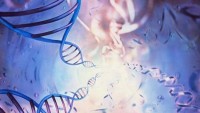Harvard Researchers Create ‘Octobot,’ the First Autonomous, Entirely Soft Robot
| Arthur Dominic Villasanta | | Aug 29, 2016 12:59 AM EDT |
(Photo : Lori Sanders) The octobot uses a microfluidic logic circuit powered by hydrogen peroxide converted into gas when in contact with platinum instead of rigid electronic parts such as batteries or circuit boards.
The "octobot" -- the first autonomous, untethered, entirely soft robot ever made -- has been demonstrated by a team of Harvard University researchers with expertise in 3-D printing, mechanical engineering and microfluidics.
Like Us on Facebook
This small, 3-D-printed robot with no electronics could pave the way for a new generation of these machines. It's powered by a chemical reaction controlled by microfluidics.
Harvard's octobot is pneumatic-based, and so is powered by gas under pressure. A reaction inside the bot transforms a small amount of liquid fuel (hydrogen peroxide) into a large amount of gas, which flows into the octobot's arms and inflates them like balloons.
Soft robotics could help revolutionize how humans interact with machines. Researchers, however, have struggled to build entirely compliant robots.
Electric power and control systems such as batteries and circuit boards are rigid. Until now, soft-bodied robots have been either tethered to an off-board system or rigged with hard components.
Robert Wood, the Charles River Professor of Engineering and Applied Sciences, and Jennifer A. Lewis, the Hansjorg Wyss Professor of Biologically Inspired Engineering at the Harvard John A. Paulson School of Engineering and Applied Sciences (SEAS), led the research. Lewis and Wood are also core faculty members of the Wyss Institute for Biologically Inspired Engineering at Harvard.
"One longstanding vision for the field of soft robotics has been to create robots that are entirely soft, but the struggle has always been in replacing rigid components like batteries and electronic controls with analogous soft systems and then putting it all together," said Wood.
"This research demonstrates that we can easily manufacture the key components of a simple, entirely soft robot, which lays the foundation for more complex designs."
Lewis explained that through their hybrid assembly approach, they were able to 3-D print each of the functional components required within the soft robot body, including the fuel storage, power and actuation in a rapid manner.
"The octobot is a simple embodiment designed to demonstrate our integrated design and additive fabrication strategy for embedding autonomous functionality."
Octopi have long been a source of inspiration in soft robotics since these supple creatures can perform incredible feats of strength and dexterity with no internal skeleton.
"Fuel sources for soft robots have always relied on some type of rigid components," said Michael Wehner, a postdoctoral fellow in the Wood lab and co-first author of the paper.
"The wonderful thing about hydrogen peroxide is that a simple reaction between the chemical and a catalyst -- in this case platinum -- allows us to replace rigid power sources."
To control the reaction, the team used a microfluidic logic circuit based on pioneering work by co-author and chemist George Whitesides, the Woodford L. and Ann A. Flowers University Professor and a core faculty member of the Wyss.
The circuit, a soft analog of a simple electronic oscillator, controls when hydrogen peroxide decomposes to gas in the octobot.
"The entire system is simple to fabricate. By combining three fabrication methods -- soft lithography, molding, and 3-D printing -- we can quickly manufacture these devices," said Ryan Truby, a graduate student in the Lewis lab and co-first author of the paper.
The simplicity of the assembly process paves the way for designs of greater complexity. The Harvard team's next effort will be to design an octobot that can crawl, swim and interact with its environment.
"This research is a proof of concept," said Truby. "We hope that our approach for creating autonomous soft robots inspires roboticists, material scientists and researchers focused on advanced manufacturing."
The paper was co-authored by Daniel Fitzgerald of the Wyss Institute and Bobak Mosadegh of Cornell University. The research was supported by the National Science Foundation through the Materials Research Science and Engineering Center at Harvard and by the Wyss Institute.
The research is described in the journal Nature. A video of the octobot can be viewed here.
Tagsoctobot, Harvard University, microfluidics, Soft Robotics
©2015 Chinatopix All rights reserved. Do not reproduce without permission
EDITOR'S PICKS
-

Did the Trump administration just announce plans for a trade war with ‘hostile’ China and Russia?
-

US Senate passes Taiwan travel bill slammed by China
-

As Yan Sihong’s family grieves, here are other Chinese students who went missing abroad. Some have never been found
-

Beijing blasts Western critics who ‘smear China’ with the term sharp power
-

China Envoy Seeks to Defuse Tensions With U.S. as a Trade War Brews
-

Singapore's Deputy PM Provides Bitcoin Vote of Confidence Amid China's Blanket Bans
-

China warns investors over risks in overseas virtual currency trading
-

Chinese government most trustworthy: survey
-

Kashima Antlers On Course For Back-To-Back Titles
MOST POPULAR
LATEST NEWS
Zhou Yongkang: China's Former Security Chief Sentenced to Life in Prison

China's former Chief of the Ministry of Public Security, Zhou Yongkang, has been given a life sentence after he was found guilty of abusing his office, bribery and deliberately ... Full Article
TRENDING STORY

China Pork Prices Expected to Stabilize As The Supplies Recover

Elephone P9000 Smartphone is now on Sale on Amazon India

There's a Big Chance Cliffhangers Won't Still Be Resolved When Grey's Anatomy Season 13 Returns

Supreme Court Ruled on Samsung vs Apple Dispute for Patent Infringement

Microsoft Surface Pro 5 Rumors and Release Date: What is the Latest?














